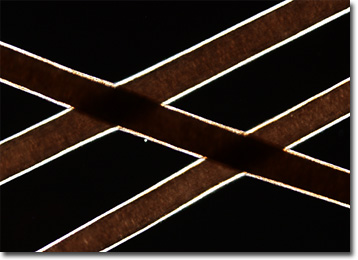Polarized Light Microscopy Digital Image Gallery
Horse Hair
Until the early twentieth century, horses were closely connected to the daily lives of many humans. Technological developments, however, greatly reduced the human need for the animals as machines, such as the automobile, began to takeover many of the tasks that formerly were carried out by horses.

Although there are numerous different breeds of horses that vary greatly in appearance and behavior, there is only one species of this hoofed animal, Equus caballus. The wide array of horse breeds that exist today were developed by humans through many centuries of selective breeding, resulting in an assortment of animals with varying characteristics suited for specific needs. In the Middle Ages, for instance, when knights were commonly equipped with heavy armor and weapons, strong, massive animals called Great Horses were bred. More recently, there has been an increased interest in breeding fine racehorses, which are typically much smaller and lighter in stature than many other horses, facilitating their impressive running speeds.
In addition to their better-known involvement in farming and transportation throughout history, horses have also been a notable contributor to the textile industry. Horsehair, which comes from the manes and tails of horses, has been used to make a type of stiff cloth for centuries. This material is poorly suited for apparel and was once used to make shirts for those seeking religious penance. In the 1800s, however, horsehair cloth became a popular choice for upholstery. Today, horsehair is often utilized as bristles for paintbrushes, as a filler material, and as the strings of violin bows.
